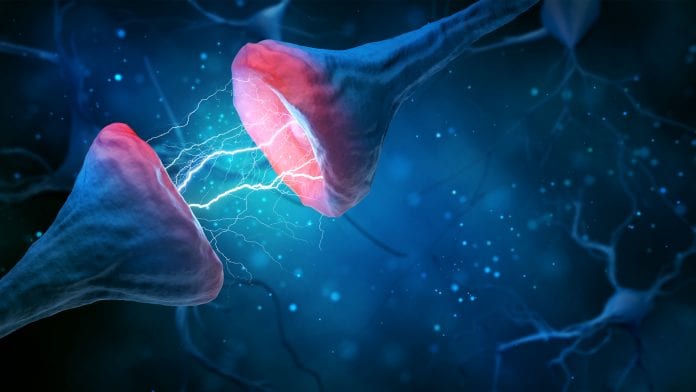
Researchers have discovered a new printable biomaterial that could help create neurons for regenerative medicine to treat patients with neurodegenerative diseases and spinal cord injuries.
Northwestern University researchers are closer to developing a platform that is able to treat conditions using regenerative medicine due to the discovery of a synthetic, highly bioactive material that is suitable for 3D printing. The team say the material could “grow” neurons in a laboratory from a patient’s own cells.
In 2018 the laboratory of Samuel Stupp demonstrated that materials can be designed with dynamic molecules that are programmed to migrate over long distances and are able to self-organise to form larger, “superstructured” bundles of nanofibres. Now, Stupp’s research group has shown that these superstructures can enhance neuron growth.
The researchers say the finding could help lead to cell transplantation strategies for spinal cord injuries and neurodegenerative diseases such as Parkinson’s and Alzheimer’s disease.
The paper has been published in the journal Advanced Science.
Regenerative medicine
The material is created by mixing two liquids that quickly become rigid due to ‘host-guest complexes’ that imitate key-lock interactions among proteins, as well as the concentration of these interactions in micron-scale regions through a long scale migration of “walking molecules.” The molecules cover a distance thousands of times larger than themselves to band together into the large superstructures.
As the molecules form these superstructures, large pores open that allow cells to penetrate and interact with bioactive signals that can be integrated into the biomaterials. The mechanical forces of 3D printing disrupt the host-guest interactions in the superstructures and cause the material to flow, but it can rapidly solidify into any macroscopic shape because the interactions are restored spontaneously by self-assembly.
Stupp, the lead author on the study and the director of Northwestern’s Simpson Querrey Institute, said: “This is the first example where we’ve been able to take the phenomenon of molecular reshuffling we reported in 2018 and harness it for an application in regenerative medicine. We can also use constructs of the new biomaterial to help discover therapies and understand pathologies.
“Cartilage and heart tissue are very difficult to regenerate after injury or heart attacks, and the platform could be used to prepare these tissues in vitro from patient-derived cells. These tissues could then be transplanted to help restore lost functions. Beyond these interventions, the materials could be used to build organoids to discover therapies or even directly implanted into tissues for regeneration since they are biodegradable.”
The researchers say this also enables the 3D printing of structures with distinct layers that harbour different types of neural cells to study their interactions.
Growing neurons
One of the molecules in the material integrates an imitation of a protein in the central nervous system known as brain-derived neurotrophic factor (BDNF), which helps neurons survive by promoting synaptic connections and allowing the neurons to be more plastic. This protein, and the mimic in the biomaterial, activates its receptor known as Trkb.
The researchers found that neurons actively penetrate the large pores and populate the new biomaterial when the mimetic signal is present, which could allow for an environment where neurons differentiated from patient-derived stem cells mature before transplantation.
As the team has applied a proof of concept to neurons, Stupp believes he could now break into other areas of regenerative medicine by applying different chemical sequences to the material.
























